What Are Scales
Scales are collections of the eight notes that make up a key. If you were to use just those notes, you could make melodies and harmonies that sound good together.
For history buffs—or anyone who wants to dominate trivia night—the word scale comes from the Latin word scala, which means ladder. When you look at a scale written out, it resembles a ladder, where each rung represents a note that belongs to the key signature.
There are several categories of scales, including major scales, minor scales, and modes. When reading scales, you’ll notice that the key is defined by the key signature rather than accidentals written on each individual note.
Each key also has its own character. Some keys feel angry and dramatic, others sad, and some bright and joyful. These character traits are one reason composers choose one key over another.
What Is a Major Scale?
A major scale is made up of seven unique notes (with the first note repeated at the octave) that span the range of an octave. The distances between the notes in all major scales always follow the same pattern:
whole, whole, half, whole, whole, whole, half
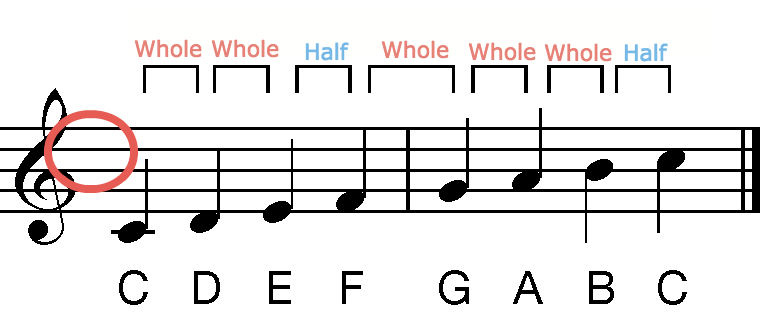
Each note in a major scale is also referred to as a scale degree:
- 1st: Tonic
- 2nd: Supertonic
- 3rd: Mediant
- 4th: Subdominant
- 5th: Dominant
- 6th: Submediant
- 7th: Leading Tone
- 8th: Tonic (again)
To make this clearer, look at the example of the C Major scale. The first note is C, which is the tonic. E is the mediant, and G is the dominant.
Once you understand this structure, you’ll see that all major scales follow the same pattern—only the starting pitch changes.
The 12 Major Scales
There are twelve major scales, one for each pitch class in Western music. Below is a breakdown of each major scale, its notes, and its commonly associated character.
C Major Scale
The C Major scale is often the first scale students learn because it contains no sharps or flats.

The notes of the C Major scale are: C, D, E, F, G, A, B, C. On the piano, this scale uses only white keys.
Because it has no accidentals, C Major is often described as having a pure or simple character. It is frequently associated with innocence and clarity. One famous symphony in C Major is Beethoven’s Symphony No. 1.
D Major Scale
The D Major scale contains two sharps in the key signature: F-sharp and C-sharp.
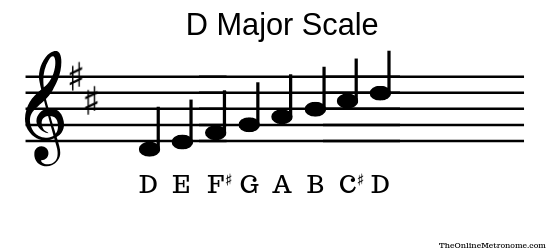
The notes of the D Major scale are: D, E, F-sharp, G, A, B, C-sharp, D.
D Major is often associated with triumph and victory, which is why it appears frequently in marches, religious music, and celebratory works. Brahms’ Symphony No. 2 is written in D Major.
E Major Scale

The E Major scale contains four sharps and is made up of the notes: E, F-sharp, G-sharp, A, B, C-sharp, D-sharp, E.
This key is often described as joyful and radiant, sometimes even referred to as “joyous laughter.” Anton Bruckner’s Symphony No. 7 is a well-known example of a work in E Major.
F Major Scale
The key of F Major contains one flat: B-flat.

The notes of the F Major scale are: F, G, A, B-flat, C, D, E, F.
F Major is commonly described as calm and pastoral. Antonín Dvořák’s Symphony No. 5, written in a pastoral style, makes effective use of this key.
G Major Scale
The G Major scale has one sharp: F-sharp.
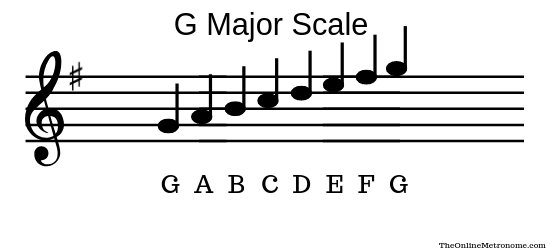
Its notes are: G, A, B, C, D, E, F-sharp, G.
G Major is often described as rustic and idyllic, evoking feelings of warmth and friendliness. Gustav Mahler’s Symphony No. 4 is a notable example, depicting a child’s view of Heaven.
A Major Scale
A Major contains three sharps: F-sharp, C-sharp, and G-sharp.
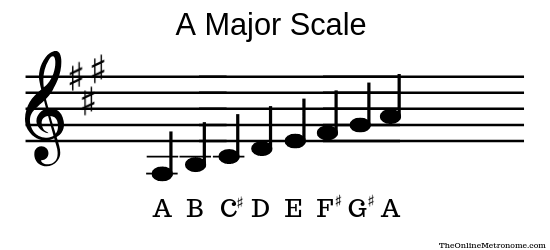
The notes are: A, B, C-sharp, D, E, F-sharp, G-sharp, A.
The key of A Major is often associated with innocent love and trust. Mendelssohn’s Symphony No. 4, inspired by his travels in Italy, is written in this key.
B Major Scale
B Major has five sharps: F-sharp, C-sharp, G-sharp, D-sharp, and A-sharp.
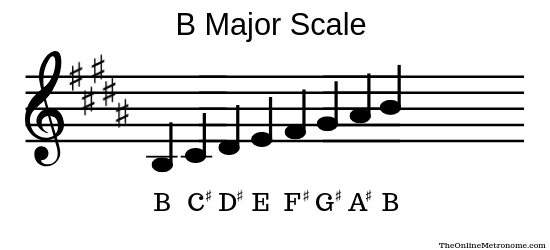
The notes are: B, C-sharp, D-sharp, E, F-sharp, G-sharp, A-sharp, B.
This key is often described as intense and passionate, capable of expressing love, anger, jealousy, and rage. Shostakovich’s Symphony No. 2, written to commemorate the October Revolution, is in B Major.
D-Flat Major Scale
D-flat Major and C-sharp Major are enharmonic equivalents, meaning they sound the same but are written differently.

D-flat Major contains five flats: B-flat, E-flat, A-flat, D-flat, and G-flat. It is considered a balanced key, capable of expressing a wide emotional range. Howard Hanson’s Symphony No. 2 is written in D-flat Major.
C-Sharp Major Scale
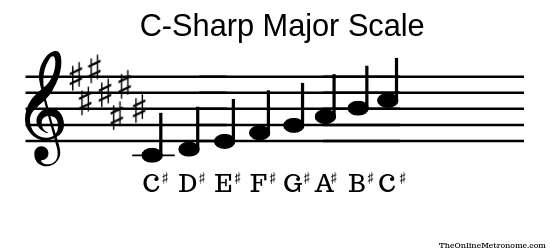
C-sharp Major contains seven sharps—every note is sharp. While it sounds the same as D-flat Major, it is often approached differently in composition. Mahler’s Symphony No. 5 is a famous example written in C-sharp Major.
E-Flat Major Scale
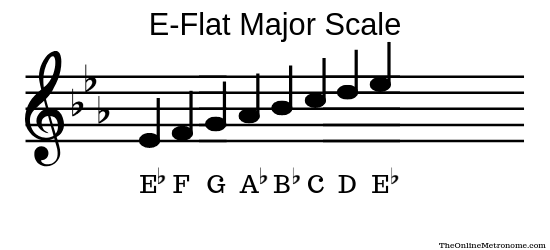
E-flat Major has three flats: B-flat, E-flat, and A-flat.
The notes are: E-flat, F, G, A-flat, B-flat, C, D, E-flat.
E-flat Major is often associated with love and devotion. Beethoven’s Symphony No. 3, “Eroica,” is written in this key and was originally dedicated to Napoleon.
G-Flat Major Scale

G-flat Major is enharmonically equivalent to F-sharp Major and contains six flats. Every note is flat except F.
F-Sharp Major Scale
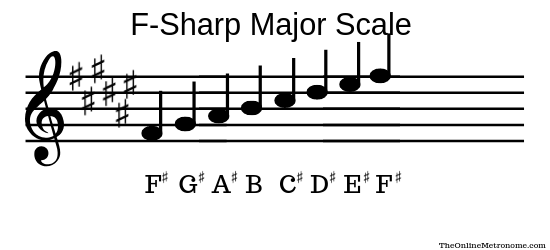
F-sharp Major contains six sharps and is made up of the notes: F-sharp, G-sharp, A-sharp, B, C-sharp, D-sharp, E-sharp, F-sharp.
This key is often described as expressing triumph over difficulty. Because it is challenging to play on many instruments, it is rarely used for symphonies. Mahler’s Symphony No. 10 is a notable exception.
A-Flat Major Scale

A-flat Major contains four flats and is often described as somber or noble. Edward Elgar’s Symphony No. 1 opens in A-flat Major, which he described as “simple, noble, and elevating.”
B-Flat Major Scale
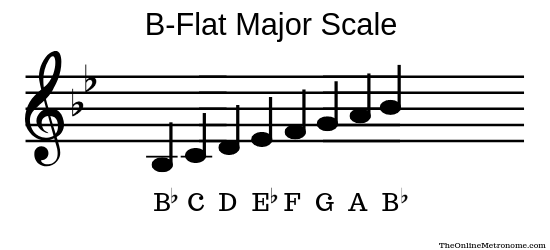
B-flat Major contains two flats: B-flat and E-flat. Its notes are: B-flat, C, D, E-flat, F, G, A, B-flat.
This key is commonly described as cheerful and optimistic. Prokofiev’s Symphony No. 5, written during World War II, is a powerful example of this character.
How to Practice Major Scales
Major scales are the building blocks of music. Learning them helps you read faster, recognize key signatures, and feel more confident with common finger patterns.
A simple process for learning a new major scale:
- Print two copies of the scale.
- On one copy, write the fingering under each note.
- Without playing, slowly say the note name while pressing the fingering.
- When comfortable, play the scale very slowly.
- Repeat until you can play it perfectly ten times in a row.
- Close your eyes and try playing the scale from memory.
Once the fingerings feel natural, add rhythm:
Number the notes of the scale from 1 to 8.
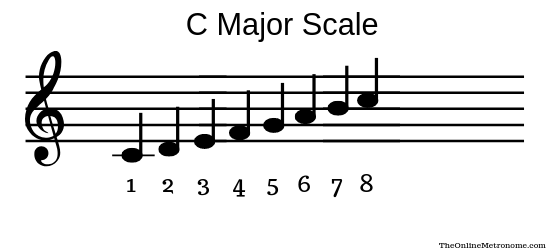
Start by playing 1–2–1.

When you can play it perfectly three times in a row, add another note.
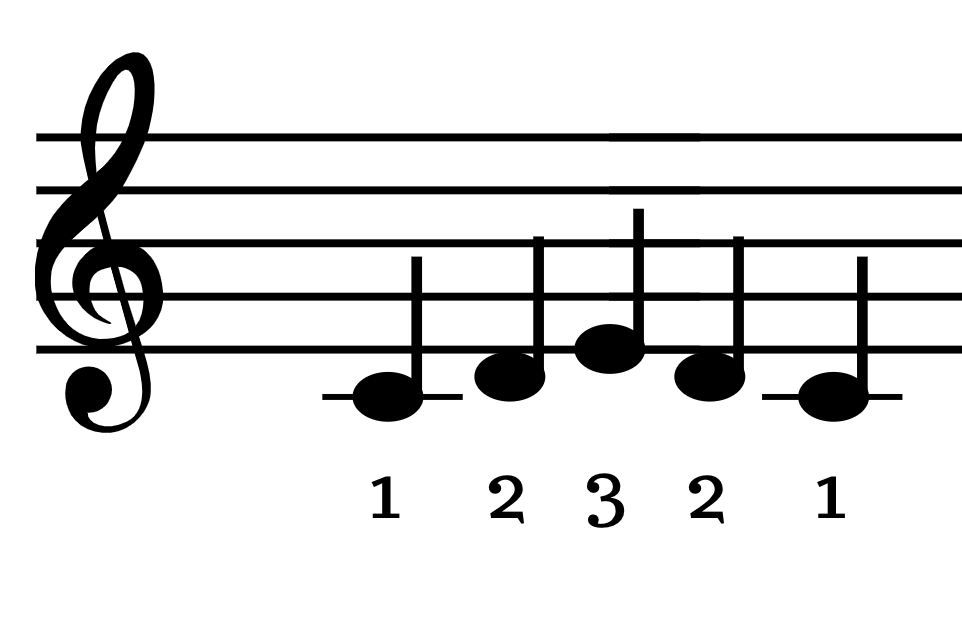
Continue building the scale this way, adding one note at a time until you can play the full major scale cleanly.
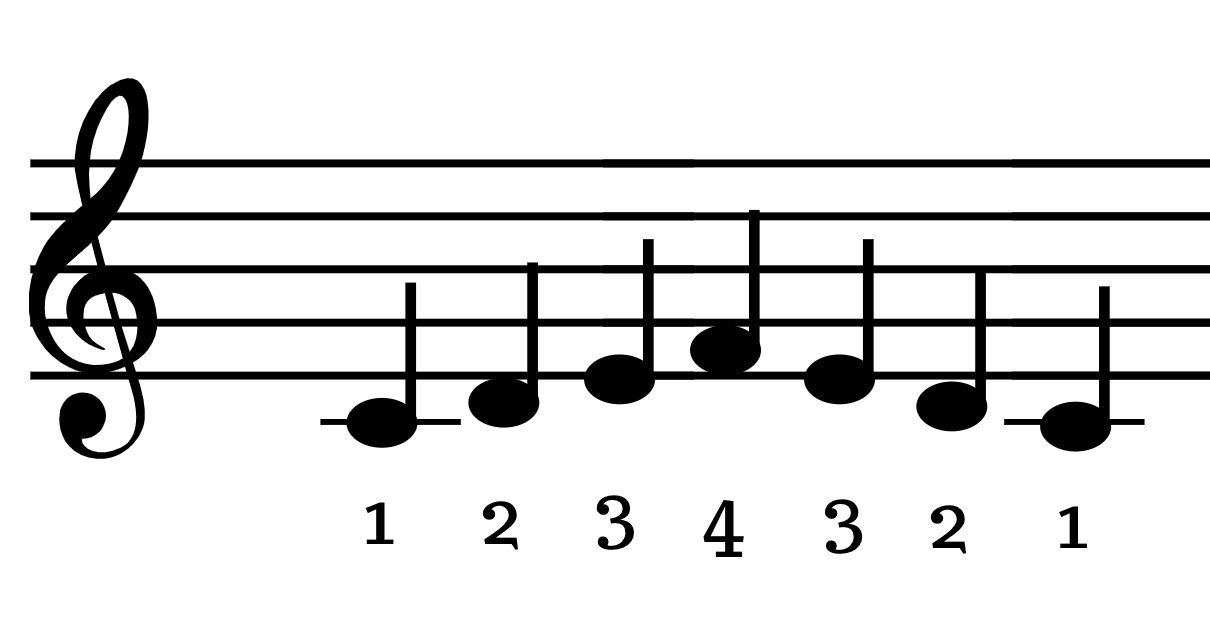
For multiple octaves, keep going—the pattern repeats.
